It is always a humbling experience to realize how recent our species is and how old our planet is, especially when discoveries are made that predate our existence by millions of years.
It is now the skull of what could be thought of as the ultimate sea monster that has given us yet another reminder of our tiny existence after being extracted from the cliffs of Dorset’s Jurassic Coast.
The colossal sea monster in question was a pliosaur, a voracious marine reptile that terrorized the oceans approximately 150 million years ago.
The skull of a pliosaur, a voracious marine reptile that terrorized the oceans approximately 150 million years ago, was recovered from a beach in South England
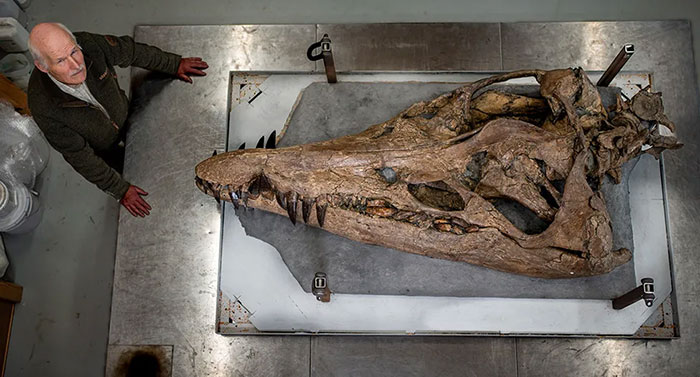
It is now one of the species’ two-meter-long, perfectly preserved fossils that has just been found, marking one of the most complete specimens of its type to ever be discovered.
Paleontologist Steve Etches told the BBC: “It’s one of the best fossils I’ve ever worked on. What makes it unique is it’s complete.”
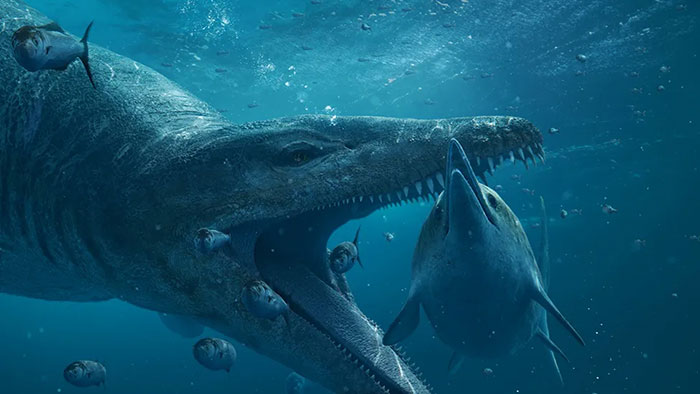
The fossil expert further described the remains of the creature: “The lower jaw and the upper skull are meshed together, as they would be in life. Worldwide, there’s hardly any specimens ever found to that level of detail. And if they are, a lot of the bits are missing, whereas this, although it’s slightly distorted – it’s got every bone present.”
As per the British broadcaster, the sea monster’s skull is longer than most humans are tall; a true testimony to how small we are in comparison to how enormous dinosaurs would’ve been in comparison.
Paleontologist Steve Etches showed Sir David Attenborough the skull, which Steve’s friend had discovered after a stroll along a beach near Kimmeridge Bay
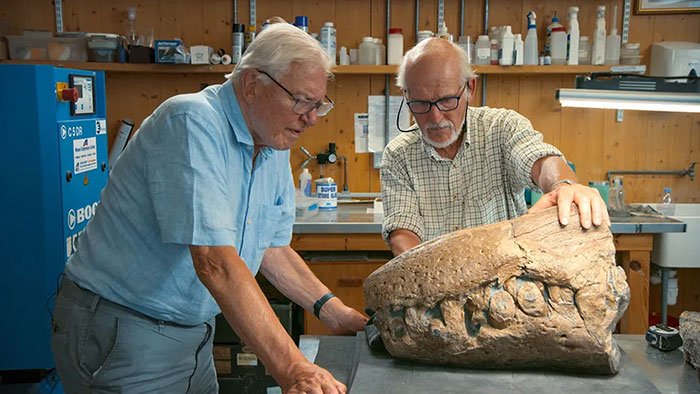
The pliosaur’s fossil examined by experts still has 130 long and razor-sharp teeth, which could kill with a single bite, according to the media.
Moreover, each tooth is marked with fine ridges, the outlet described. Such a mouthful would have helped the beast to pierce the flesh and then quickly extract its dagger-like fangs, ready for a rapid second attack.
Pliosaurs could be considered to be the ultimate prehistoric killing machine. Growing to be 10 to 12 meters long, the sea monsters also had four powerful flipper-like limbs to propel themselves at high speed and were reportedly considered apex predators in the ocean.
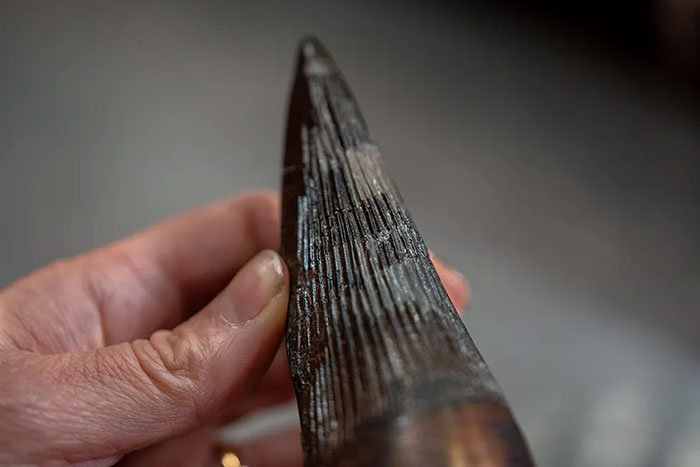
Dr. Andre Rowe, an associate at the Palaeobiology Research program at the University of Bristol, told the British media: “The animal would have been so massive that I think it would have been able to prey effectively on anything that was unfortunate enough to be in its space.”
“I have no doubt that this was sort of like an underwater T. rex,” Andre added.
According to the outlet, meals would have included other reptiles such as its long-necked cousin, the plesiosaur, and the dolphin-like ichthyosaur. Moreover, fossil evidence has reportedly revealed that it would have even feasted on other passing pliosaurs.
A drone pinpointed where the rest of the body might’ve been
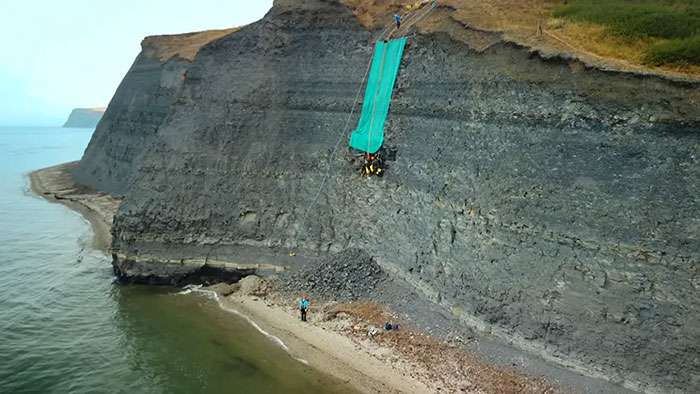
The fossil of the incredible sea apex predator’s skull was recovered when Steve’s friend and fellow fossil enthusiast Phil Jacobs came across the tip of the snout of the pliosaur lying in the shingle, whilst on a stroll along a beach near Kimmeridge Bay in southern England’s famous World Heritage Jurassic Coast.
The unlikely discovery was reportedly too heavy to carry, prompting Phil to fetch Steve. Subsequently, the friends rigged a makeshift stretcher to take the fossil fragment to safety.
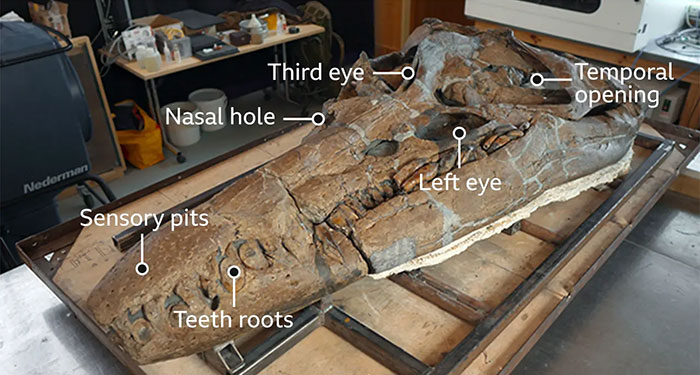
Thanks to a drone, the rest of the body was also found after a likely location was pinpointed. Nevertheless, the only way to excavate the fossil was to reportedly abseil down from the top.
Paleobiologist Professor Emily Rayfield has also examined the large circular openings at the rear of the head.
The pliosaur’s fossil has 130 long and razor-sharp teeth
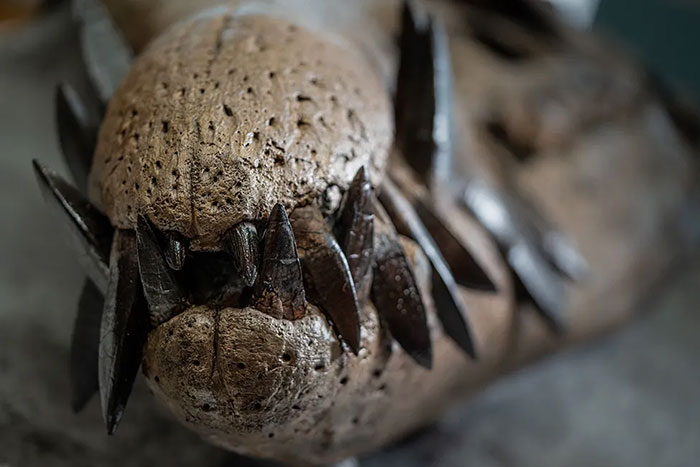
These parts reportedly inform her about the size of the muscles operating the jaws of the pliosaur, and the forces generated as its mouth snapped shut and crushed its prey.
She said: “If you can generate a really powerful bite, you can incapacitate your prey; it’s less likely to get away. A powerful bite means you’re also able to crunch through tissue and bone quite effectively.”
Emily further explained: “As for feeding strategies: crocodiles clamp their jaw shut around something and then twist, to maybe twist a limb of their prey. This is characteristic of animals that have expanded heads at the back, and we see this in the pliosaur.”
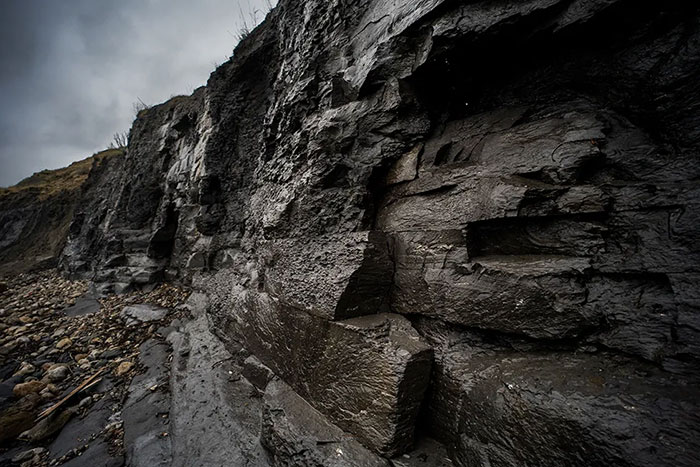
In addition to all its terrifying unveiled features, the specimen’s physiology also includes a snout dotted with small pits that reportedly may have been the site of glands to help it detect changes in water pressure made by prospective prey.
At the top of the pliosaur’s head is a hole that would reportedly have housed a parietal, or third, eye, just like lizards, frogs, and certain fish alive today have.
This third eye was reportedly light-sensitive and might have helped in locating other animals, especially when the pliosaur was surfacing from deep, murky waters.
Steve will reportedly put the skull he found with Phil on display next year at his museum in Kimmeridge – the Etches Collection.
“It’s one of the best fossils I’ve ever worked on. What makes it unique is it’s complete,” Steve Etches explained
He told the BBC: “I stake my life the rest of the animal is there. And it really should come out because it’s in a very rapidly eroding environment. This part of the cliff line is going back by feet a year. And it won’t be very long before the rest of the pliosaur drops out and gets lost. It’s a once-in-a-lifetime opportunity.”
The skull will be featured in a special David Attenborough program on BBC One on New Year’s Day entitled Attenborough and the Giant Sea Monster.
The program will air on BBC One and iPlayer at 20:00 on 1 January.
Dinosaur enthusiasts were delighted by the news of the pliosaur skull discovery



















